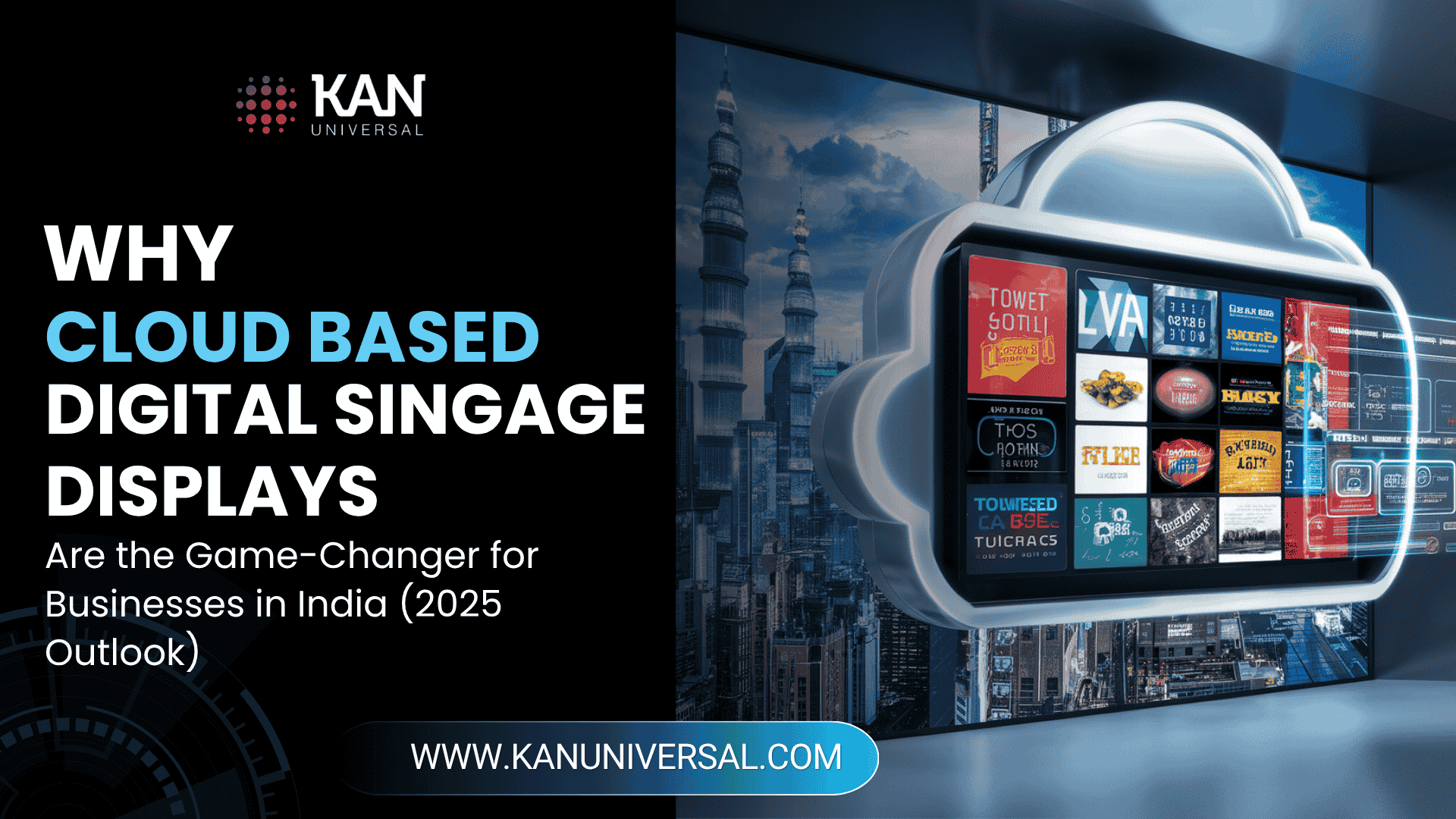LED Video Walls, LCD Video Walls, and Direct View LED Displays each offer unique strengths for commercial displays. LED Video Walls use modular panels with self-illuminating pixels, resulting in bezel-free, bright, and scalable visuals ideal for both indoor and outdoor use. They provide high durability and low maintenance, holding advantages over LCD Video Walls, which have visible bezels and lower brightness, making them better suited for indoor spaces with controlled lighting.
Direct View LED Displays push the LED concept further, offering exceptional brightness, deep contrasts, and seamless visuals for premium locations like control rooms or showrooms. When selecting a display, consider environmental conditions (indoor vs. outdoor), viewing distance, content type, budget, installation needs, and desired aesthetics. LED Video Walls are preferable for dynamic content and scalability, whereas LCDs favor budget-conscious, indoor applications. Direct View LEDs are the top choice for high-end, close-view installations.
Table of Contents
Although initial costs are lower with LCDs, LEDs provide greater long-term value due to longer lifespans, easier maintenance, and flexible expansion. For businesses seeking standout visuals, scalability, and strong ROI, LED Video Walls lead the future of digital display technology.
Understanding LED Video Walls The Technology Behind the Brilliance
An LED Video Wall is made up of multiple LED panels that work together to form one large, seamless display. Unlike traditional screens, each LED pixel emits its own light, allowing for superior brightness, color uniformity, and viewing angles.
These walls can be scaled to any size and shape, making them ideal for indoor and outdoor setups. Their modular design ensures that even if one panel requires service, the rest of the display remains functional a big plus for 24/7 operations. Compared to LCD Video Walls, LED walls eliminate bezel lines and offer long-term durability with low maintenance needs.
LCD Video Walls The Classic Yet Limiting Alternative
LCD Video Walls are built by combining several LCD panels. While they remain a cost-effective choice for many indoor applications, they come with visible bezels that interrupt seamless visuals. LCDs rely on backlighting, which limits contrast and brightness, particularly in sunlit or outdoor environments.
What is the difference between LED wall and video wall?
An LED wall uses light-emitting diodes as its source and is bezel-free, while a video wall is a broader category that includes LCD, projection, or LED-based systems. So, all LED walls are video walls but not all video walls are LED.
Direct View LED Displays: The Premium Next Step in Digital Visuals
Direct View LED Displays take the LED concept to the next level by allowing each pixel to emit light directly, without needing a separate panel structure. This offers unparalleled brightness, deep blacks, and contrast, even in bright environments.
They are often used in airports, control rooms, or premium showrooms where image uniformity, resolution, and aesthetics are crucial. Unlike traditional LED panels, direct view LEDs are designed for closer viewing distances, making them suitable for high-end indoor applications.
Installation Insights: Avoiding Common LED Wall Mounting Problems
Mounting precision directly impacts the visual performance of large-format LED walls. Misalignment or poor ventilation can lead to uneven brightness or overheating.
Installation checklist for indoor vs outdoor mounting
- Indoor Mounting: Ensure proper alignment, air circulation, and easy rear access for maintenance.
- Outdoor Mounting: Check IP ratings for weather resistance, wind tolerance, and temperature stability.
To prevent LED wall mounting problems, always:
- Use certified mounting brackets and structural support.
- Maintain proper ventilation behind LED panels.
- Plan cable routing and maintenance access points in advance.
Practical Comparison: When to Use LED, LCD, or Projectors
Each technology serves unique needs.
Best use cases comparing LED, LCD, and projectors
- LED Video Walls: Perfect for advertising, events, and control rooms that require vivid motion visuals and long-term reliability.
- LCD Video Walls: Ideal for offices, studios, or places with controlled lighting and tighter budgets.
- Projectors: Best for temporary installations or dark, indoor venues where cost and portability matter more than brightness.
| Display Type | Brightness | Seamless Display | Ideal Use Case | Lifespan |
| LED Video Wall | ★★★★★ | Yes | Indoor/Outdoor Advertising | 100,000 hrs |
| LCD Video Wall | ★★★☆☆ | No (bezels) | Offices, Studios | 50,000 hrs |
| Projector | ★★☆☆☆ | N/A | Events, Conferences | 20,000 hrs |
Making the Right Choice: How to Select the Ideal Display for Your Needs
With multiple display technologies on the market each excelling in different conditions selecting the right visual solution can be a make-or-break decision for businesses. The key lies in matching environment, purpose, and budget with the correct display type. Let’s break down the core factors that help you choose between LED Video Walls, LCD Video Walls, and Direct View LED Displays effectively.
1. Assess Your Viewing Environment
Your display environment largely dictates which technology performs best.
- Indoor Spaces: For corporate offices, studios, or malls with controlled lighting, an LCD Video Wall can work well. Its cost-effective setup and moderate brightness levels are sufficient for indoor viewing.
- Outdoor or Bright Environments: Outdoor advertising, stadiums, and event venues demand LED Video Walls due to their exceptional brightness and weather resistance.
- Premium Indoor Installations: Control centers, airports, or luxury showrooms benefit from Direct View LED Displays for deep blacks and seamless visuals.
2. Consider Viewing Distance and Pixel Pitch
Pixel pitch the distance between two LED pixels determines image clarity.
- Close Viewing (1.2mm–2.5mm): Ideal for conference rooms or retail environments.
- Far Viewing (4mm–6mm+): Perfect for outdoor LED Video Walls or stage setups.
LCD Video Walls have fixed resolutions, while LED panels allow flexible pixel pitch based on budget and size.
3. Define the Purpose and Content Type
- Vibrant Advertising: LED Video Walls shine in dynamic ads and motion graphics.
- Detailed Data: LCD Video Walls or Direct View LEDs suit control centers or presentations.
- Events & Promotions: Modular LED setups allow quick assembly and mobility.
Your content type should directly dictate your display technology no one-size-fits-all.
4. Evaluate Budget and Long-Term ROI
While LCD Video Walls cost less initially, maintenance and shorter lifespans can increase long-term expenses.
LED Video Walls and Direct View LEDs have higher upfront costs but provide longer lifespans (up to 100,000 hours) and energy efficiency.
- Frequent Content Updates: Go for LED for durability and easy maintenance.
- Occasional Use: LCDs may suffice for conference or meeting rooms.
5. Factor in Installation and Maintenance
Precision mounting, accessibility, and consistent calibration are key.
- LED Video Walls: Require exact alignment and ventilation.
- LCD Video Walls: Easier to mount but prone to bezel misalignment.
- Direct View LEDs: Need professional setup for uniform brightness.
Follow manufacturer guidelines, use certified mounts, and ensure adequate air circulation to avoid LED wall mounting problems.
6. Evaluate Scalability and Flexibility
If you plan to expand your setup, LED Video Walls offer modular scalability you can easily add or rearrange panels.
LCD Video Walls have limited expansion due to fixed screens, while Direct View LEDs provide modular growth but at a premium cost. For evolving spaces like showrooms or event venues, modular LED systems are the most future-ready option.
7. Prioritize Aesthetic Integration
Your display should enhance not clash with your design.
- LED Video Walls: Bezel-free, ultra-modern appeal.
- LCD Video Walls: Work well in modular office designs.
- Direct View LEDs: Offer sleek, futuristic aesthetics perfect for high-end interiors.
Conclusion: Why LED Video Walls Lead the Future of Visual Displays
Each display technology has its strengths, but LED Video Walls strike the best balance of performance, scalability, and long-term value. They deliver unmatched brightness, seamless visuals, and flexibility for any environment.
Whether you’re lighting up a retail facade or creating a corporate command center, the right choice depends on your space, audience, and vision but one thing is clear that LED Video Walls are defining the future of visual storytelling.



